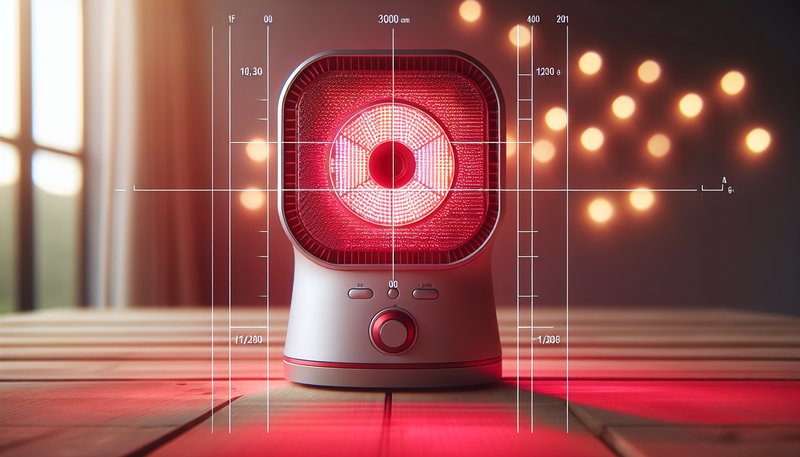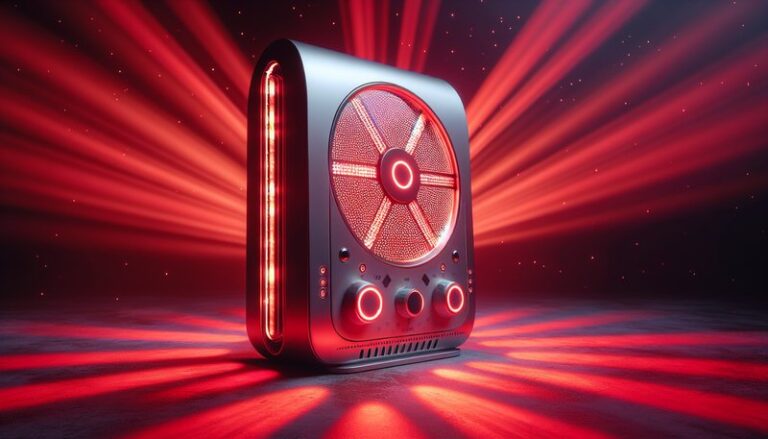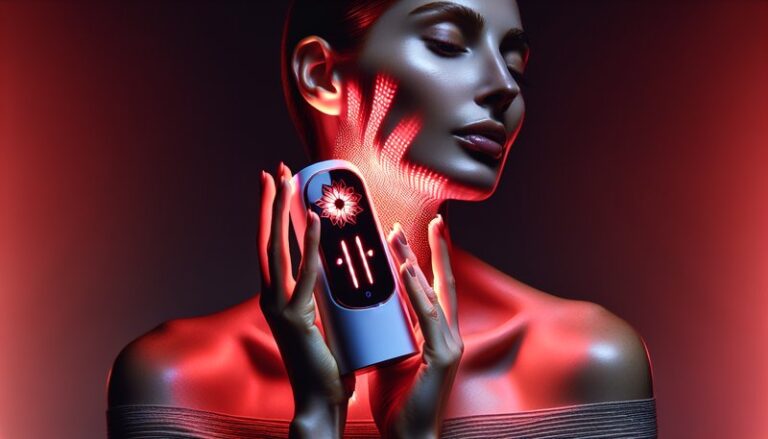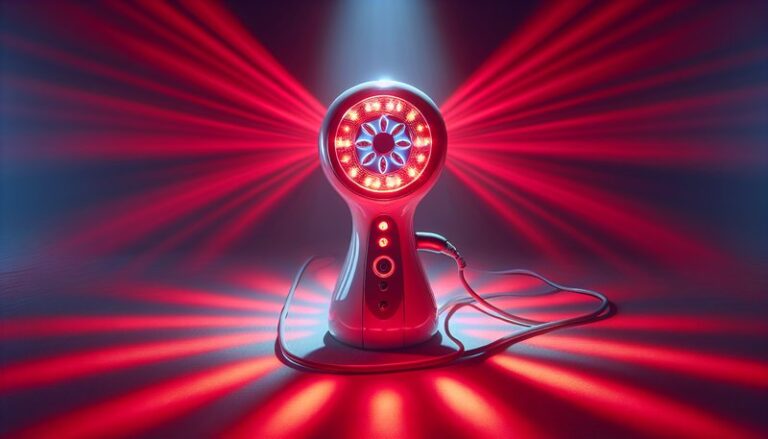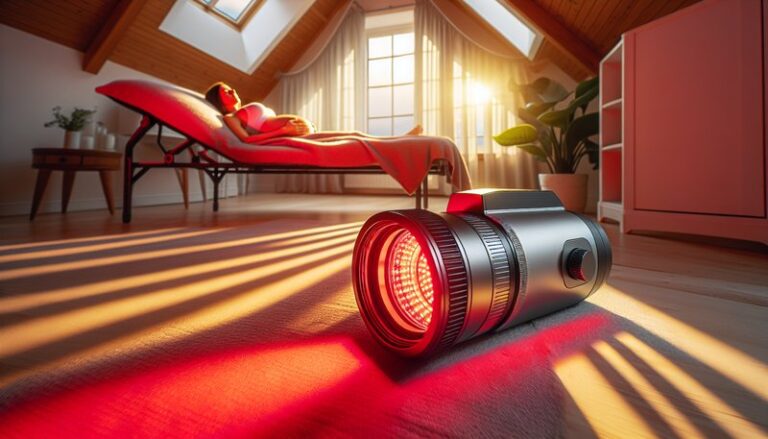Does Red Light Therapy Keep You Awake?
Does Red Light Therapy Keep You Awake?
Is the glow of red light keeping you alert when all you want is a good night’s sleep?
In recent years, red light therapy has gained popularity for its potential healing benefits and ability to improve health. However, as with any treatment, questions have arisen about its effects, particularly regarding sleep. This article explores whether red light therapy can keep you awake, delves into its benefits, discusses considerations, and examines alternative options for those looking to improve sleep quality.
Key Takeaways
- Red light therapy is believed to enhance energy production in cells, potentially affecting sleep patterns.
- Many users report improved sleep quality when used correctly, while others find it energizing.
- Understanding the timing and usage of red light therapy is essential for those focused on sleep improvement.
What is Red Light Therapy?
Red light therapy is a non-invasive treatment that uses low-wavelength red light to stimulate cellular function. It works by penetrating the skin and promoting healing through increased mitochondrial activity, thus enhancing energy production in the body’s cells.
This therapy is often administered through LED panels or handheld devices and is used for various purposes, including skin rejuvenation, pain relief, and muscle recovery. It has been touted for its numerous health benefits, yet its impact on sleep is particularly intriguing.
The mechanism behind how red light affects sleep lies in its influence on the circadian rhythm. The exposure to red light, especially at night, could theoretically disrupt melatonin production, a hormone essential for sleep regulation, thus raising concerns about its sleep-related effects.
What are the Benefits of Red Light Therapy?
Red light therapy offers a range of health benefits that may indirectly support better sleep if used properly. The following points explore its advantages.
Improved Cellular Function
Red light therapy enhances mitochondrial function, leading to increased energy levels and improved recovery from fatigue. Thus, users may feel revitalized but may need to time their sessions carefully to avoid interfering with sleep patterns.
Pain Relief
Many individuals use red light therapy to manage chronic pain and inflammation. Reduced discomfort can contribute to better sleep, as pain often disrupts rest and recovery at night.
Skin Health Enhancement
Using red light therapy can improve skin tone and texture, promoting a healthier appearance. Feeling better about one’s skin can boost confidence and potentially contribute to improved mental well-being, paving the way for a restful night’s sleep.
Check out our insights on Is Red Light Therapy Safe for Dogs?
Mood Enhancement
Recent studies suggest that red light therapy may help in reducing symptoms of depressive disorders. A better mood can lead to improved quality of sleep, as emotional well-being often influences sleep quality.
Enhanced Muscle Recovery
Athletes frequently use red light therapy post-exercise to facilitate faster muscle recovery. A well-recovered body often leads to improved sleep quality, as physical exhaustion is a key factor in achieving restful sleep.
Is it Possible to Use Red Light Therapy Without Keeping Awake?
Yes, it is possible to use red light therapy in a way that minimizes impact on sleep. The timing and duration of exposure play pivotal roles in this regard.
What are the Advantages of Using Red Light Therapy Before Sleep?
Using red light therapy in the evening has specific benefits.
Employing red light therapy before bedtime can help prepare your body for rest by lowering anxiety levels and promoting relaxation. It can also help establish a calming nighttime routine, signaling to your body that it’s time to wind down.
One advantage of evening use is that the therapy may support deeper sleep cycles by reducing pain and promoting muscle recovery after a long day.
What are the Disadvantages of Using Red Light Therapy in the Evening?
Conversely, there can be drawbacks to evening use.
For some individuals, exposure to red light shortly before sleep may be energizing, delaying the onset of sleep or causing restlessness. This effect could be due to the stimulation of cellular energy production, potentially conflicting with the body’s natural wind-down process.
What are the Things to Consider Before Using Red Light Therapy?
Before integrating red light therapy into your routine, there are essential factors to consider.
Timing of Use
Always consider when you use red light therapy. Opt for morning or early afternoon sessions if you find it energizing, reserving evening sessions for relaxing purposes only if they help with sleep quality.
Session Duration
Shorter exposure durations may be beneficial for promoting relaxation and calming effects. Keeping sessions within 10-20 minutes can prevent overstimulation.
Personal Sensitivity
Individual responses to red light therapy can vary. Conduct a trial and observe how you feel post-session, adjusting timing and duration based on your body’s response.
Additional Precautions
Ensure that your device is suitable for home use and follow manufacturer instructions. Consulting a healthcare professional before starting any new therapy is advisable, especially for those with pre-existing conditions.
What are the Alternatives to Red Light Therapy for Sleep Improvement?
If red light therapy doesn’t align with your needs, several alternatives exist.
Melatonin Supplements
Melatonin supplements can aid in regulating sleep patterns, especially for those experiencing insomnia or jet lag. Supporting the body’s natural sleep-wake cycle can enhance overall sleep quality.
Sleep Hygiene Practices
Optimizing your sleep environment—such as maintaining a cool room, comfortable bedding, and limiting screen time—can make a significant difference. Cultivating a consistent bedtime routine also encourages better sleep.
Mindfulness and Meditation
Practices such as mindfulness, meditation, or yoga before bed can help quiet the mind, reduce anxiety, and promote relaxation, making them excellent alternatives for improving sleep quality.
Cognitive Behavioral Therapy (CBT)
CBT is an effective treatment for insomnia, addressing negative thoughts and behaviors related to sleep. Working with a therapist can help develop healthier sleep habits and patterns.
Conclusion: Is it Recommended to Use Red Light Therapy?
In conclusion, red light therapy offers various benefits, but its impact on sleep is nuanced. While many users find it enhances relaxation and sleep quality, others may experience increased energy. To maximize its benefits, consider session timing and duration based on individual responses.
Ultimately, experimenting with red light therapy while remaining mindful of your body’s signals can help determine if this approach works for you.
Frequently Asked Questions
Can red light therapy disrupt my sleep?
It can, especially if used too close to bedtime. Understanding your individual response is key.
How long should I use red light therapy for sleep improvement?
A session of 10-20 minutes is generally recommended, but monitor your body’s reaction to determine what duration works best for you.
Is red light therapy suitable for everyone?
While it is typically safe for most, individuals with certain medical conditions or sensitivities should consult a healthcare professional before use.
Read the extensive guide Can Red Light Therapy penetrate clothing?
Can I use red light therapy during the day?
Yes, many people find using it during the day can help boost energy levels without negatively impacting sleep.
